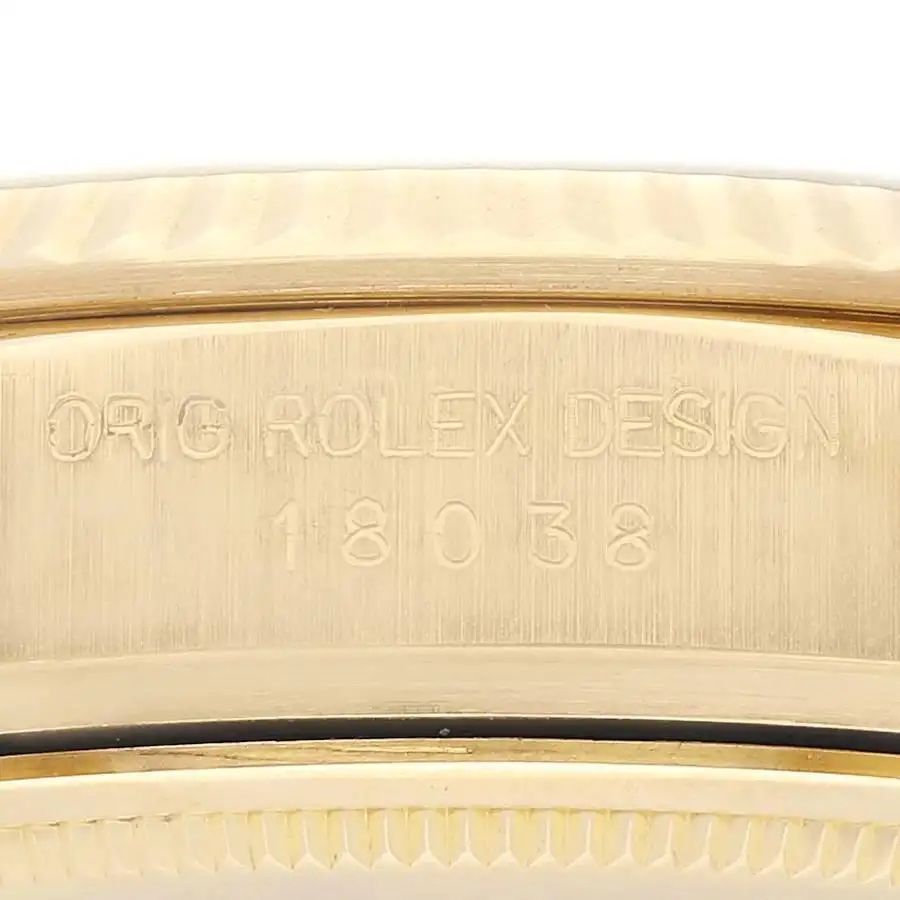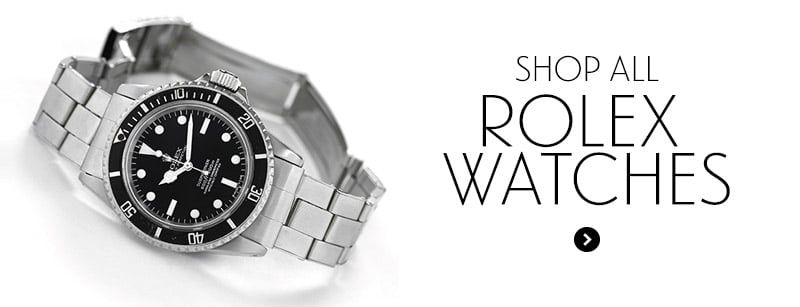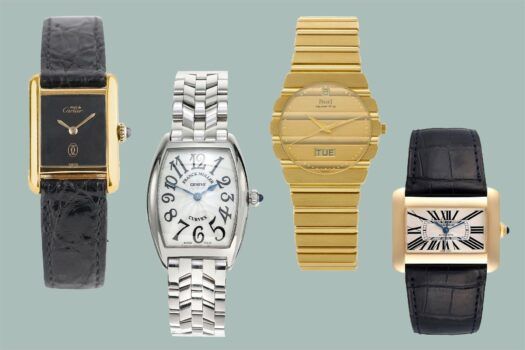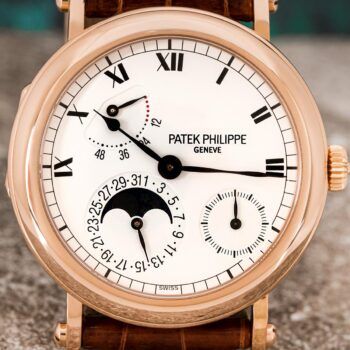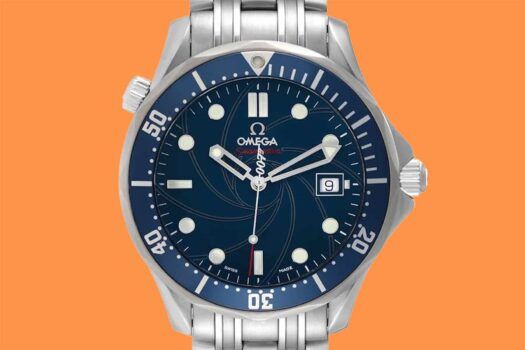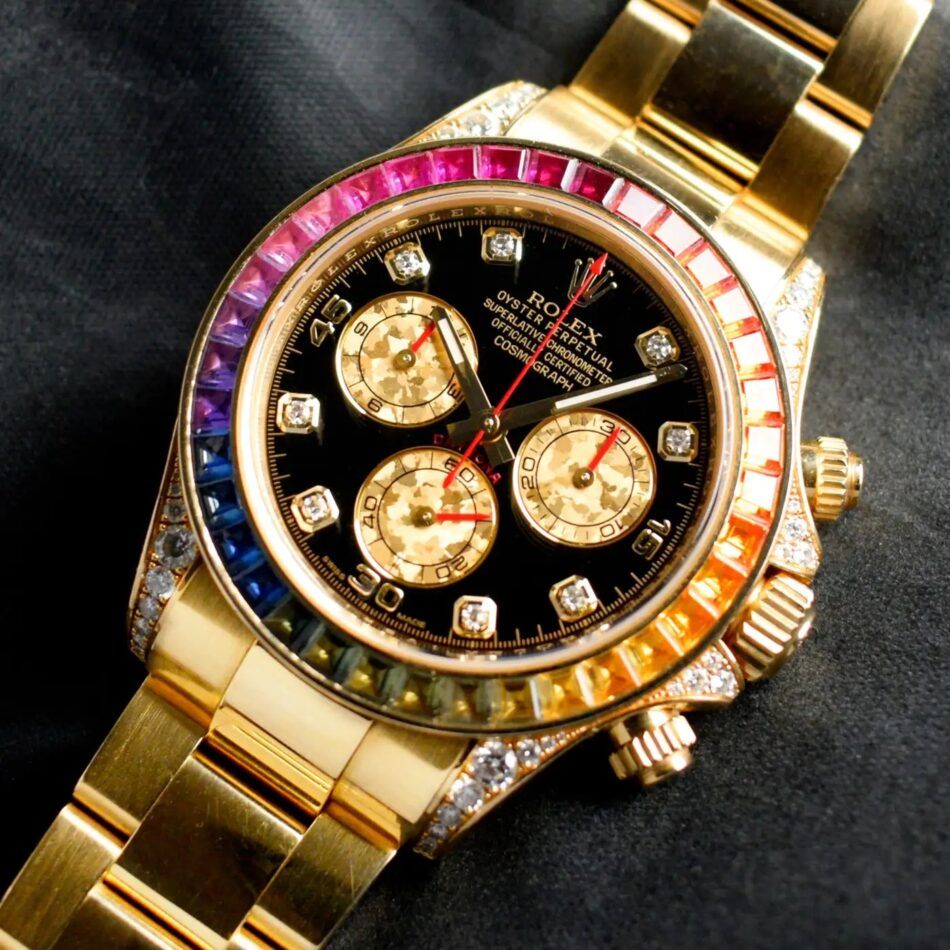
The vast majority of fake Rolex watches in the world are cheap, easy-to-spot knockoffs. “You know that if it cost $50, it’s not a real Rolex. It’s a very obvious fake,” says Matthew Bain, a Miami-based watch expert who operates Matthew Bain, Inc.
But some counterfeits are not so obvious. Just last year a group of imitation ceramic Rolex Submariners snuck into the market. “If you didn’t look at one next to the real one, and you just looked at it alone, you probably would not be able to tell it was fake,” Bain says. “A lot of people got burned.”
As counterfeiting technology and methods advance, understanding the intricacies of genuine Rolex watches becomes increasingly important for prospective buyers. Fake watches are a billion-dollar industry, with an estimated 30 million to 40 million introduced to the market each year, according to the Federation of the Swiss Watch Industry.
Sometimes counterfeiters mix and match parts from genuine Rolex watches and fake ones, making distinguishing the two even more difficult. “They might get a real Rolex movement, and then they make a fake case around it. It’s very hard to detect the originality of it,” Bain explains.
Only an expert — and luckily, 1stDibs has many — can really be trusted to determine whether or not a watch is genuine. Nevertheless, we’ve compiled a list of 13 things you should look for in a real Rolex.
1. Engraved Model and Serial Numbers
Genuine Rolex watches have their serial and model numbers deeply engraved into the metal between the lugs attaching the band to the body — whereas fakes often just have them etched on with acid. The watch’s serial number, which can be used to determine its production date, is located on the six o’clock side.
On the 12 o’clock side is the model number (also called the style or reference number), typically appearing below the text “ORIG ROLEX DESIGN.” To view the model and serial numbers, you have to take off the band, using a pushpin or small paper clip to remove the pin that holds it in place.
Counterfeiters often don’t bother to vary the numbers, instead printing the same digits on each replica. A simple Google search for the serial and model numbers of the watch you’re considering should reveal whether it is actually a mass-produced fake. “Many times they will etch the wrong model number on a watch. For example, a Submariner model number for a Yacht-Master,” says Abe Diveroli, of Primetime305.
Rolex has lately improved its numbering methodology. “The newer Rolexes have scrambled serials,” says Diveroli. “You could no longer date them without going to a Rolex dealer. Also, the serial numbers are now etched in the silver bezel under the crystal at the six o’clock.”
They also have “Rolex” engraved on them, although the placement of the engraving differs depending on the piece. Rolexes manufactured before 2007 included a hologram of the crown logo on the caseback. Because counterfeiters became so adept at copying it, Rolex discontinued the hologram. However, you can now be sure that any seller claiming that a watch with a hologram was made after 2007 is almost definitely peddling a replica.
2. Self-Winding or Mechanical Movement
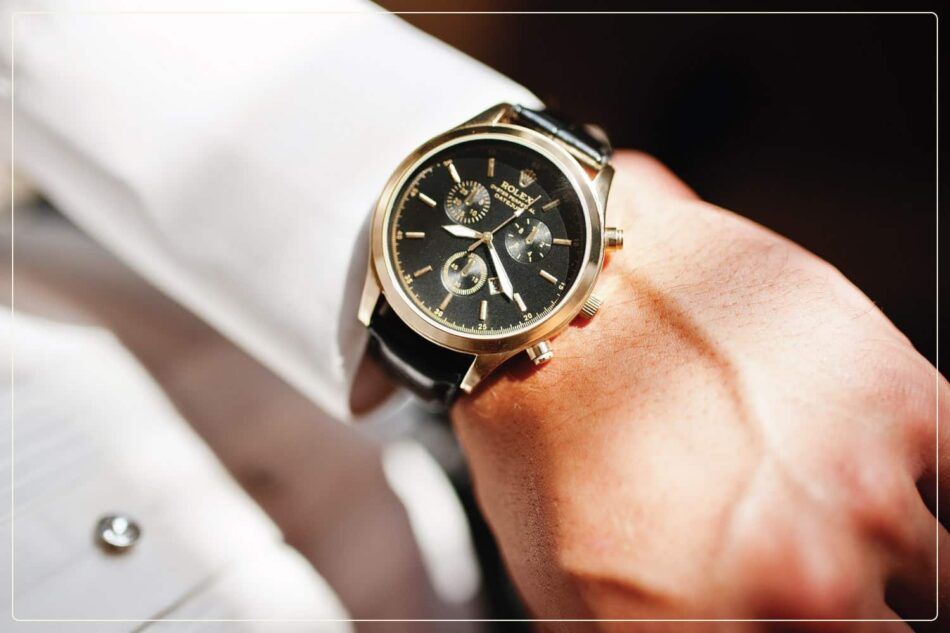
Rolex movements are self-winding and mechanical, as opposed to quartz or battery-powered. This is a bit tricky to check, since Rolex is adamant that only brand-certified watchmakers can access the movement.
One caveat: Oysterquartz Rolexes from the 1960s and 1970s were produced with quartz movements.
3. Clear and Even Text
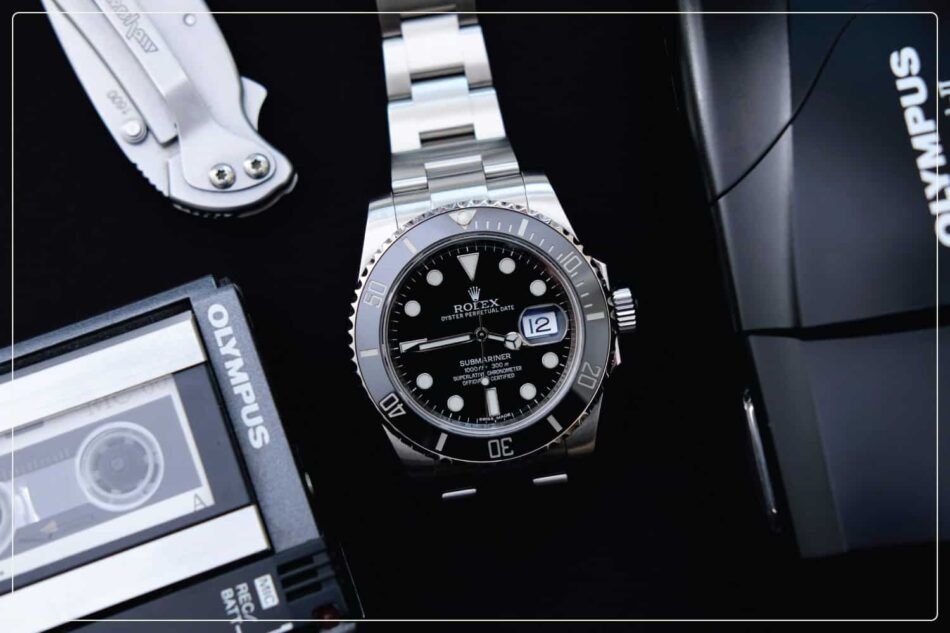
The dial of a Rolex is a prime spot for finding inconsistencies that might indicate a fake. This is where most of the writing is located, and the appearance of the text can be a dead giveaway of a counterfeit.
All lettering on the face of a Rolex watch should have an exquisitely crisp appearance. It should be centered and perfectly aligned without inconsistent spacing, blurs, splotches or misspellings. A big red flag is ink bleeding, which results from the cheaper printing methods employed for Rolex replicas.
From the Air King to the Yachtmaster, Rolex watches have a consistent font style that’s unique to the brand. Variations in the style are a good indication that the watch is fake. The font size may vary slightly, since it depends on the dial’s diameter, which can be as small as 24mm on women’s Rolexes and as large as 44mm on men’s models.
When checking the font on the face of a Rolex you’re considering, compare it with authentic pictures of the same model.
4. A Cyclops That Actually Magnifies
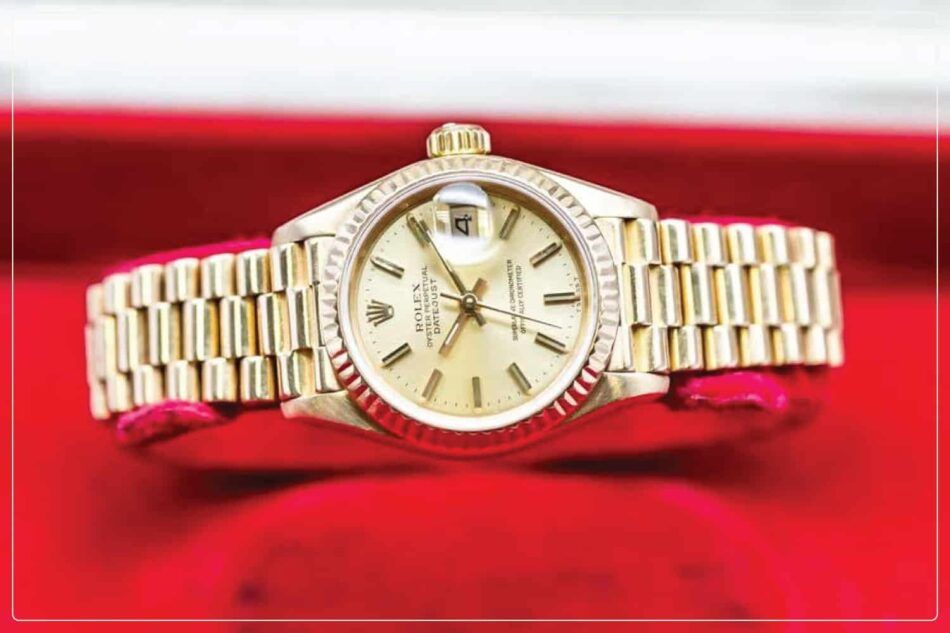
The magnifying lens that enlarges the date on the face of the watch — dubbed the “Cyclops” — should, well, magnify (2.5 times, to be exact). Hold the watch sideways to get a peek at the date without the magnifying lens. If you’re not certain that it appears bigger when looked at straight on, the watch is probably fake.
The Cyclops on an authentic Rolex is convex — you can feel a bump when you run your finger over it — and it’s centered over the date. If either of these criteria is not met, the piece may be of dubious authenticity. But another caveat: Some Rolex wearers prefer their watch without the Cyclops and remove it, so a previously owned piece without one may have simply been modified.
5. Waterproof, Not Just Water Resistant
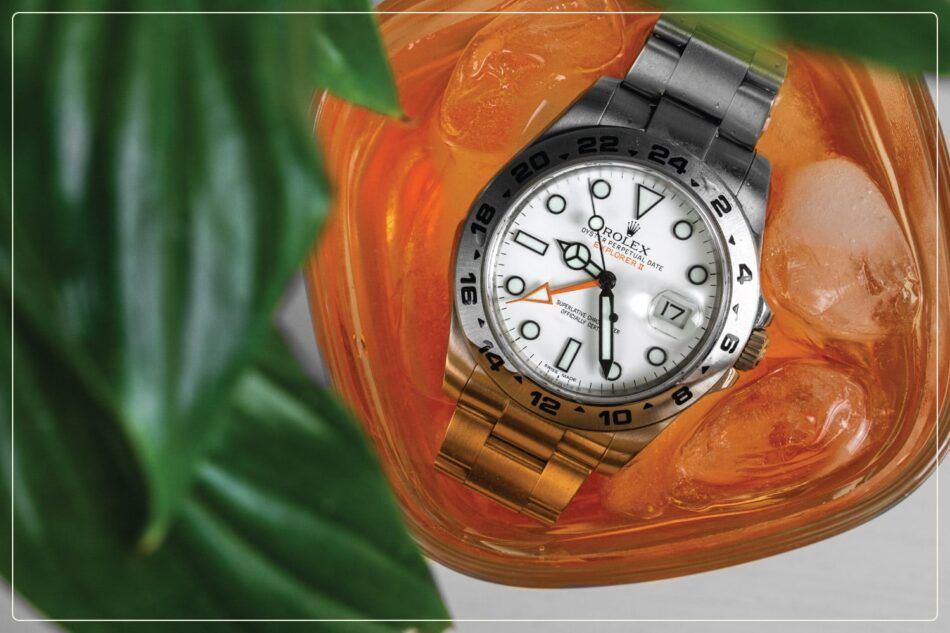
This one is pretty self-explanatory. “Waterproof” and “water resistant” both refer to an ability to keep moisture out of the case, with the former denoting higher performance underwater. The majority of Rolex watches in the Oyster line should hold up at a whopping depth of 100 meters (328 feet).
If a watch stops working while you’re out for a swim, best to just leave that fake at the bottom of the sea.
6. High-Quality Materials and Heavy Weight
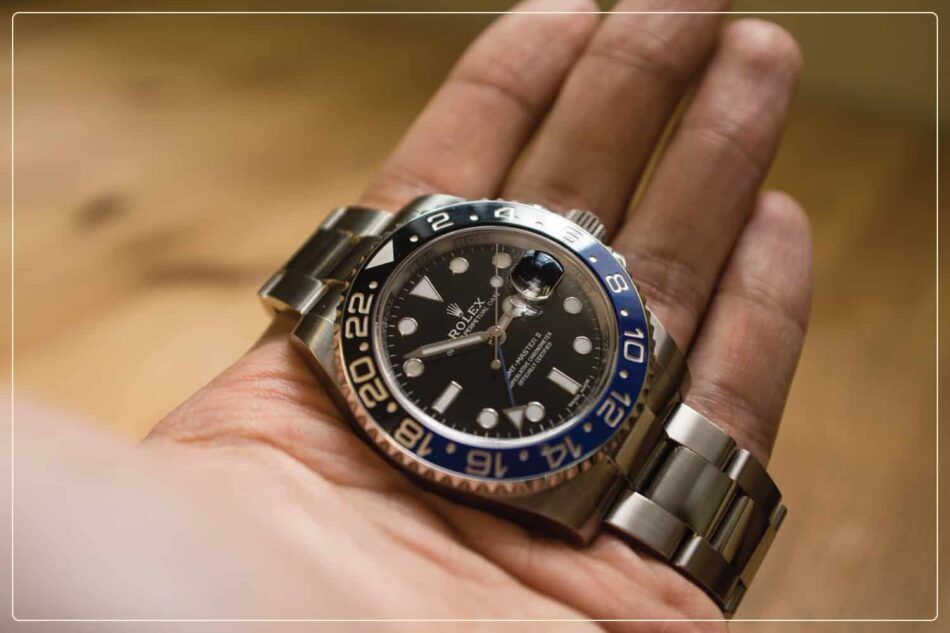
As one of the most coveted luxury watch brands in the world, Rolex uses only the most durable and high-quality materials. Any authentic Rolex feels substantial and solid, whether it’s made from the heavy-duty Oystersteel or the lighter-weight RLX Titanium or platinum. If a watch feels light or hollow, it may well be a fake.
The weights of Rolexes vary slightly, depending on the model, size, materials and year of production — older models generally weigh less than modern ones. But the weight difference between two real watches of the same model and size is negligible. In contrast, that between a fake and a genuine Rolex can be significant.
Here’s how much some of the most popular Rolex watches weigh:
- Rolex Submariner 16618: 175 grams
- Rolex Daytona 116509: 200 grams
- Rolex Explorer II 216570: 156 grams
- Rolex Daytona 116500: 141 grams
Since the weight of any watch depends on multiple factors, it’s important to note that you can’t judge the authenticity of a Rolex by its weight alone.
7. Plain Caseback
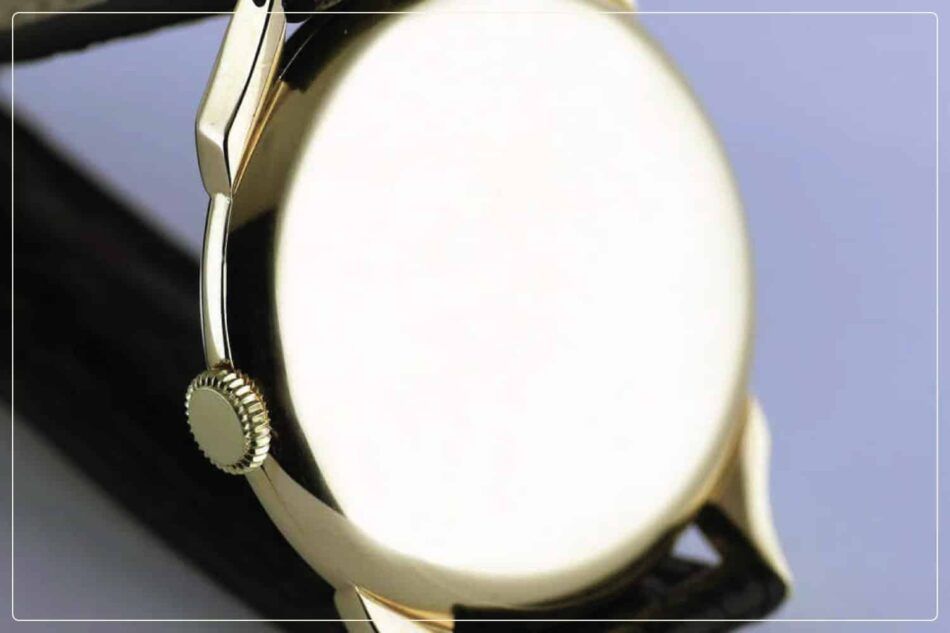
The casebacks of most Rolex watches are plain polished steel, without engravings, drawings or other decorations. Exceptions include the Sea-Dweller, which has the name of the watch and some variation of “Gas Escape Valve” written on its titanium back.
You won’t find a transparent caseback that lets you see the inner workings of the watch except on some very rare pieces from the 1930s. Such a back is a common sign of a fake Rolex.
8. Crown Etching at 6 O’clock
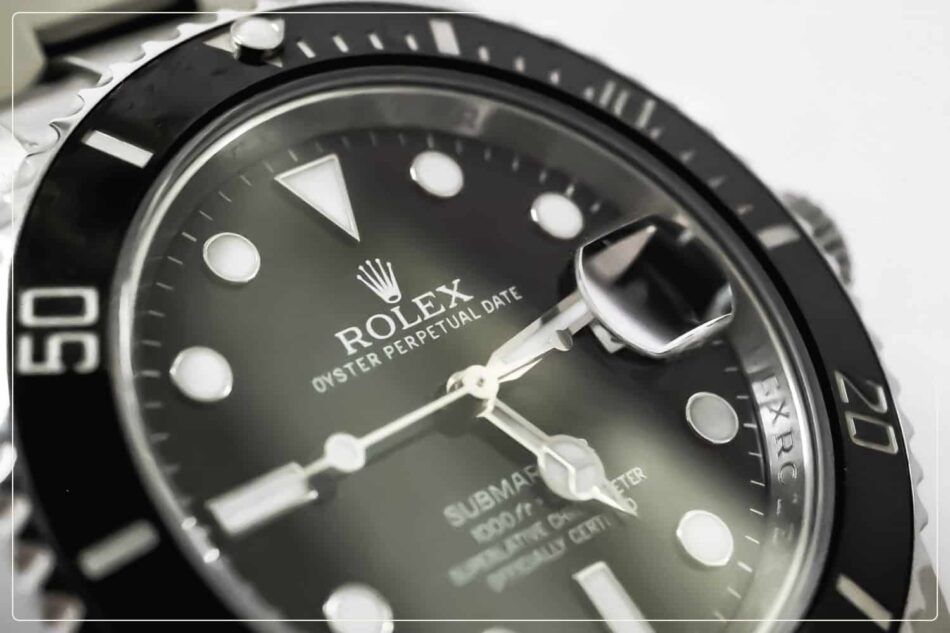
All Rolex watches made from 2002 onward have a tiny etched crown logo at the six o’clock position, which can take a magnifying glass to make out clearly. Because it’s so small, counterfeiters have a hard time replicating it.
Older models may have the crown etching at 12 o’clock.
9. Hands That Rotate Smoothly
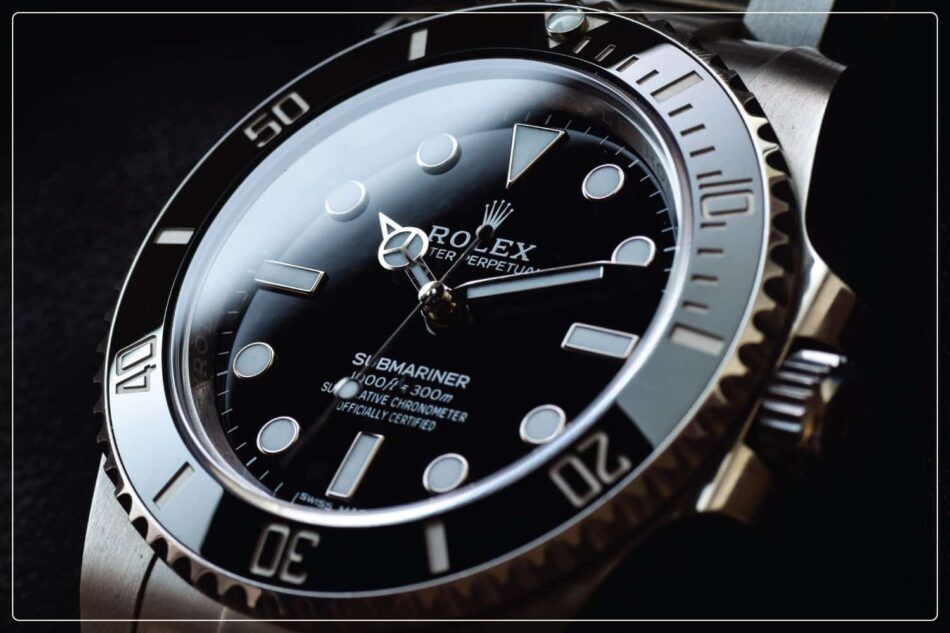
The second hand on a real Rolex should appear to the naked eye to rotate smoothly around the face. That’s because the high precision of a Rolex movement is actually broken down into eight tiny micro-ticks per second, making it look like a continuous motion. If the second hand jerks with each tick, the watch is a fake.
Each Rolex model has a specific hand style. The Yacht-Master, for instance, has a much thicker minute hand than most models, while a Daytona’s hands are a bit longer, reaching all the way to the hash marks, and are rounded at the end. The Day-Date has shorter hands with flat tips. Counterfeiters often use whatever parts are available to save money, hoping the buyers will overlook this detail.
Can You Hear a Rolex Tick?
Generally, no, you can’t hear a Rolex tick. That is because they are powered with fully mechanical movements, as opposed to the quartz battery used by less expensive watchmakers, which causes a distinctive “tick, tick, tick” sound every second. That said, some Rolex models do tick every few seconds, so it’s the loud ticking every second that indicates a fake.
10. Crown in One Piece
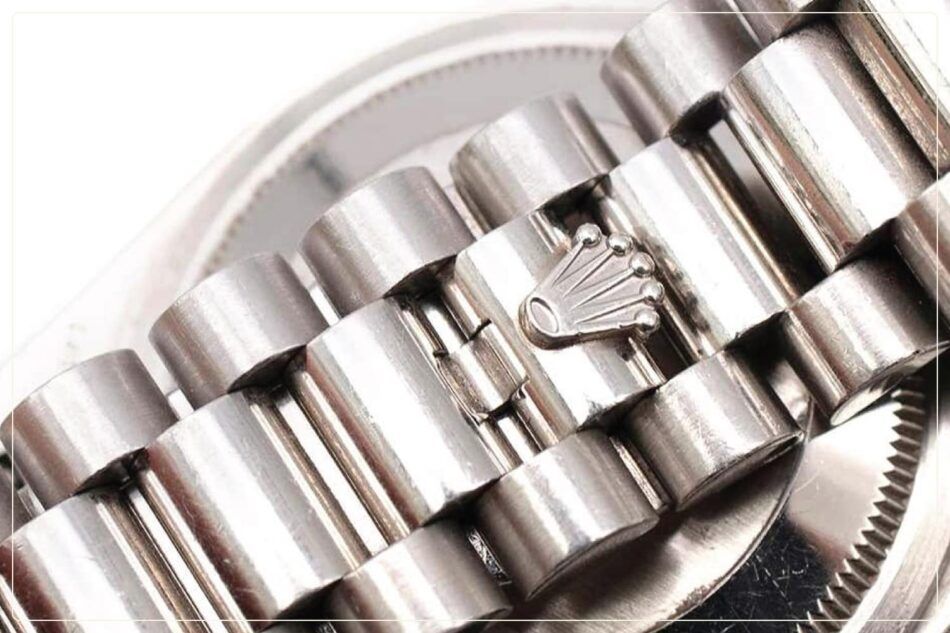
The crown — the small winding knob on the side of the watch used to set the time and date — will always have the famed Rolex crown logo, known as the coronet, engraved on the end. The Rolex crown logo itself is very detailed, finely crafted and well-proportioned, with five symmetrical points of the crown — no more and no less.
On an authentic Rolex, the winding crown and its stem are made from a single piece of metal. On many Rolex replicas, the crown is made of two pieces. Examine it closely with a magnifying glass for signs that it’s been glued together.
Another key element to look at is the crown’s grip. On a genuine Rolex, it is textured to provide traction when turning the crown. On a fake Rolex, the grip may feel uneven or difficult to turn.
The winding crown on a Rolex is always on the right side of the case for easy access — assuming it’s worn on the left wrist. The one exception is the left-handed GMT-Master II, which was introduced in 2022 to accommodate left-handed wearers.
Rolex uses Twinlock and Triplock crowns on its watches to ensure that they’re waterproof. The two different types are identified by small markings under the Rolex coronet. The Twinlock crown, featuring two sealed zones and identified by two dots under the coronet, was invented in 1953 for Rolex Oyster watches, one of the brand’s most iconic collections and the world’s first waterproof timepieces when they were introduced, in 1926. Other models that feature Twinlock crowns include the Sky-Dweller and the Datejust.
The Triplock crown, which bears the Rolex crown logo above three dots, was first used on the Rolex Sea-Dweller, in 1970. It features three sealed zones. When the crown is fully unscrewed, you can see the black O-ring that seals off the inside of the watch from water. Some good counterfeits will have similar-looking gaskets, but they’re merely cosmetic and serve only to fool the buyer.
Today, almost all Rolex dive watches have the Triplock crown, but older models still in production, including the Submariner 14060M, still use the Twinlock technology. It’s important to check the manufacture date of a particular model to determine which crown technology was used.
11. Accurate Date Keeping
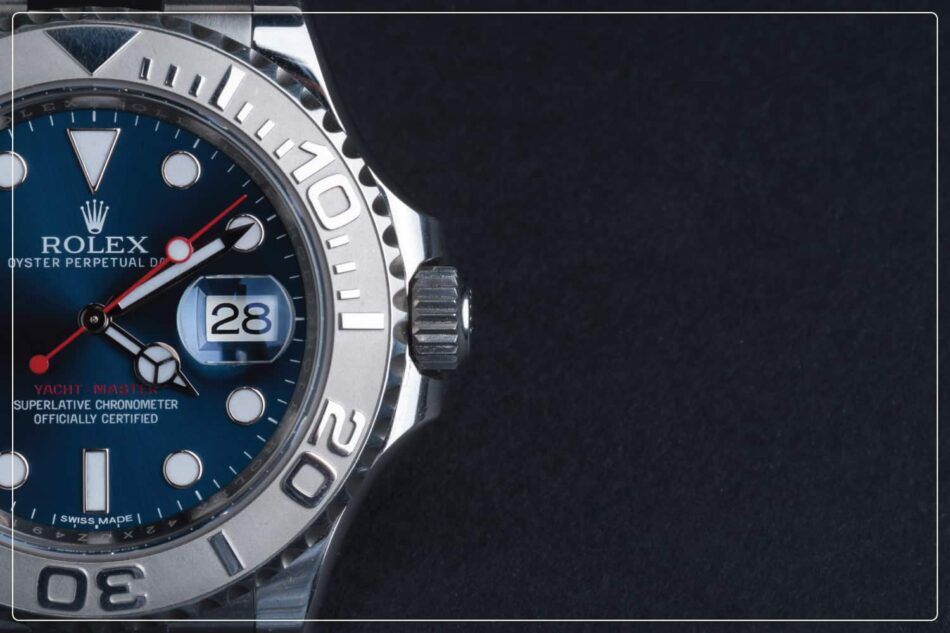
A Rolex’s date should change sharply at midnight. Don’t panic if your watch is a few minutes off — that’s likely just a sign that the watch needs some maintenance.
If the date changes slowly or more than 15 minutes late, however, the timepiece may be a fake.
12. Bands That Lie Straight
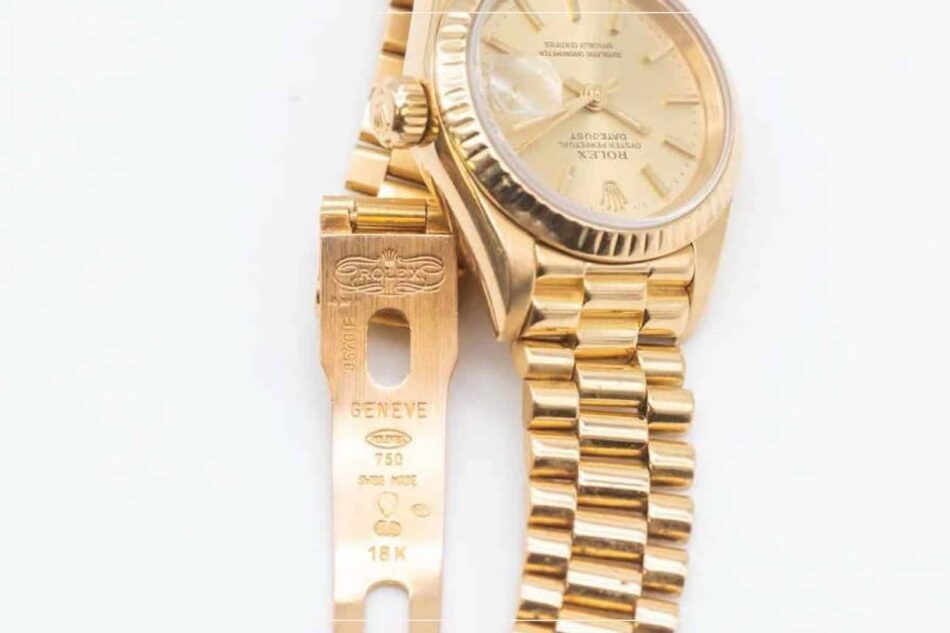
The band — or bracelet, as Rolex enthusiasts often call it — should lie straight and not kink when laid on a flat surface. Link spacing may stretch and widen with time, but the individual links should still fit together correctly.
Bain cautions that authentic watches may be paired with inauthentic bands. “A lot of faking occurs with the bands because, say you buy a gold Rolex Presidential, you wear it a lot, the band gets stretched,” he explains. “So, there are a lot of aftermarket gold bands that are not really made by Rolex. They’re heavily faked.”
13. Check the Dealer’s Credentials
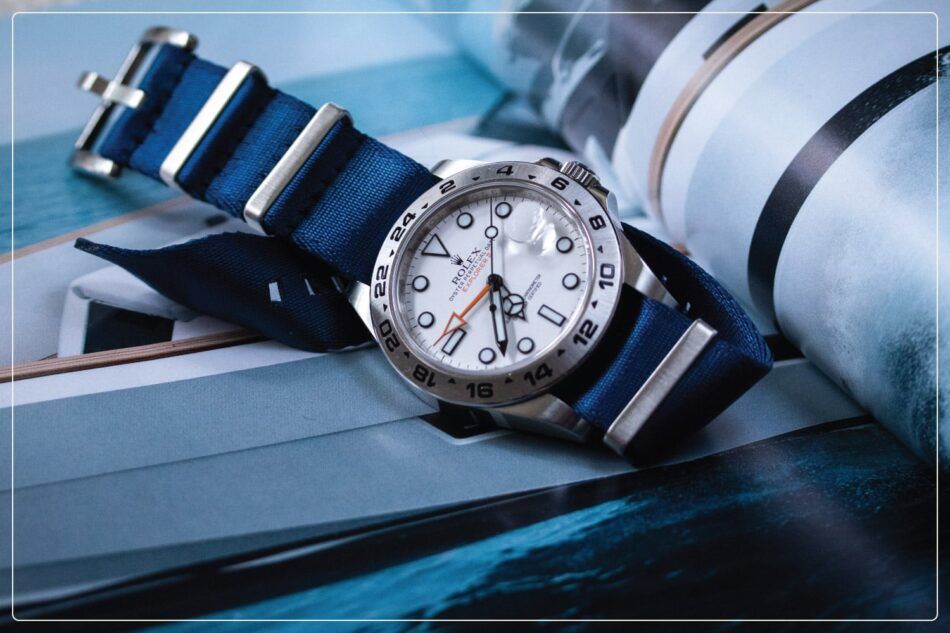
Due diligence is extremely important when making a purchase. If you’re planning to buy online, check the merchant’s rating. Ask the seller for references from watch associations like the International Watch and Jewelry Guild. Inquire with his or her previous clients about their experience.
“A good step is comparing very closely your watch with pics of the same model from a reputable dealer,” Diveroli says. “A lot of fakes are off only on minute details.”
How to Find a Reputable Seller
If a deal on a Rolex purchase appears too good to be true, it probably is. Avoid marketplaces like eBay, where fake Rolex watches are common, and make sure the photography is at least decent. Smartphone cameras are good enough these days to capture clear photos of a product, so anything blurry or out-of-focus is an automatic red flag.
If you shop at 1stDibs, you never have to worry about unsavory dealers, as we work only with expertly vetted sellers. Learn more about our promise to you.
More Rolex FAQs
Rolex watches have been a symbol of luxury, precision and style for more than a century, and the brand is firmly embedded in pop culture.
Considering Rolex’s history and mystique, you may still have questions about the company and the watches.
Who owns Rolex, and is it a nonprofit organization?
Rolex is a privately owned and operated Swiss luxury watch manufacturer founded by Hans Wilsdorf in 1905. Even though it’s a for-profit company, Rolex is known for its extensive philanthropic efforts supporting the arts, environment, science, sports and its own mentoring program.
In 1945, Wilsdorf transferred his ownership to a private trust to ensure that this charitable giving would continue. The Hans Wilsdorf Foundation owns and runs Rolex today.
Where are Rolex watches made?
All Rolex watches are crafted in the company’s own facilities in Switzerland, from initial design to final assembly. Rolex has multiple production sites, including its headquarters in Geneva; the main manufacturing facility, located in nearby Plan-les-Ouates; and production outposts in Chêne-Bourg and Bienne.
Why are Rolex watches so expensive?
The high price tag of a Rolex is due, in part, to the impeccable craftsmanship and high-quality materials that go into manufacturing each timepiece, from precious metals and proprietary Oystersteel to diamonds and gemstones.
Every step in the manufacturing process of a Rolex watch is strictly monitored to ensure a perfect product. Rolex watches are built to last. A Rolex is not only a luxury item but also an investment that can hold its value (or become more valuable) over many years.
